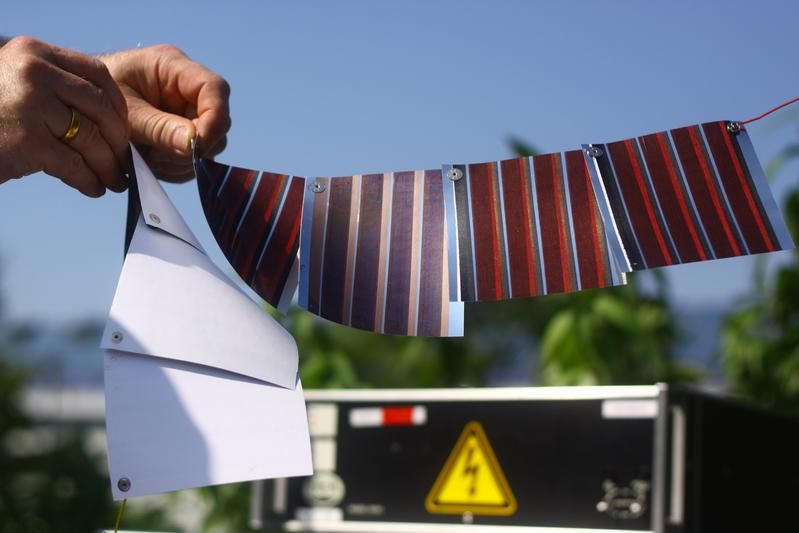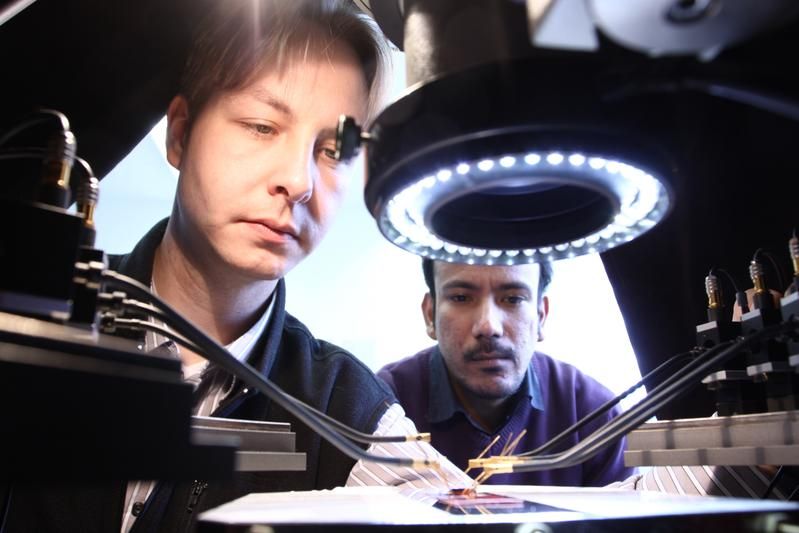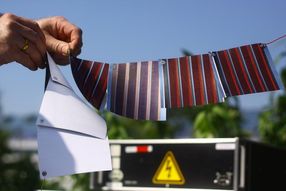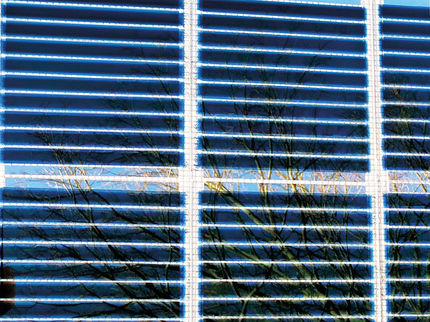Printed solar cells on paper
Chemnitz University of Technology presents solar panels, which are printed with special inks with electrical properties on standard paper
These days, everyone talks about the use of solar energy for the generation of electricity. Conventional solar cells, however, use expensive materials and are manufactured under costly clean room conditions. Consequently, they can only deliver expensive electricity. Researchers at Chemnitz University of Technology have now presented solar panels that are printed on paper. The technology known as 3PV (3PV stands for printed paper photovoltaics) uses conventional printing methods and standard substrates, like those used for magazines, posters or packaging. Special inks with electrical properties form the necessary structures on paper, which ensure that electricity is generated when being exposed to light. Since the employed conventional printing methods, i.e. gravure, flexo and offset printing, are very cost-efficient, the printed solar panels shall generate much cheaper electricity in comparison to conventional solar cells. Prof. Dr. Arved Hübler from the Institute for Print and Media Technology at Chemnitz University of Technology, who is working together with his research team on the 3PV technology for more than three years now, speaks of a paradigm shift in solar technology. His vision for the future is that common printing houses around the world could produce and market 3PV solar panels.

A 15x15 cm solar module consists of multiple strips (in this case four) of photovoltaic cells. These printed photovoltaic modules are combined via snap fasteners and form a series connection. At the two ends of the serial connection, a connector cable is attached. The front of the module consists of the active layer composition. On the back paper, the substrate is directly visible.
pmTUC/Bystrik Trnovec

Tino Zillger and Dr. Mozzam Ali characterise the properties of the printed solar cells using a prober in the laboratories of the Institute for Print and Media Technology.
pmTUC


Now the Chemnitz-based researchers have published their results in the journal Advanced Energy Materials. Hübler and his team Tino Zillger, Bystrik Trnovec Mozzam Ali and Nora Wetzold, who have been supported by colleagues from the University of Würzburg with regard to the characterisation of the cells, report that the cells printed in Chemnitz achieve an energy conversion efficiency of 1.3 percent. The researchers use a new material approach. In a special printing process, naturally oxidised zinc is applied as base electrode. The transparent counter electrode is printed with PEDOT, a conductive polymer. "The materials are constantly optimised and we are confident that the 3PV parameters can be further improved," says Tino Zillger, researcher at the Institute for Print and Media Technology and leader of the project. Even the team of Hübler is a bit surprised that it is already possible to produce very stable 3PV modules with a web printing press in the laboratory of the Institute for Print and Media Technology. "Our long experience in the field of printed electronics pays well here," says the head of the chair Print Media Technology.
Hübler assumes that all in all paper solar cells could have the edge over the current technological state of the art due to the efficient production and lower material costs. The aim of further research is to increase the efficiency to more than five percent in order to ensure that a 3PV module is economically attractive despite a life time of less than one year. "In nature we find a model for this strategy: even green leaves only have a moderate energy conversion efficiency of four to seven percent and a life time of less than one year. Nevertheless, this approach is obviously successful," explains Hübler.
The vision of being able to contribute to the overall energy supply with the help of paper solar panels is only one field of application. Researchers at Chemnitz University of Technology have already shown that it is also possible to drive small electrical devices with these paper solar cells. This opens up the possibility to supply mobile devices with “paper power” in a simple and self-sustaining way. Intelligent packaging, for instance, could include many additional features, ranging from displays to sensors. Handling of the paper solar cells can be very simple. Tino Zillger shows a possible solution with 3PV modules manufactured at the Institute for Print and Media Technology: The paper strips can be connected with the help of commercial snap fasteners. Immediately, an electrical current flows. After use, the paper modules can be recycled like any other waste paper. According to Hübler it is, thus, not only possible to generate renewable energy, but also the solar cell itself is made from renewable resources and is consequently renewable.





























































